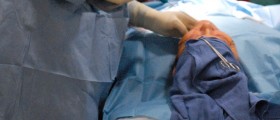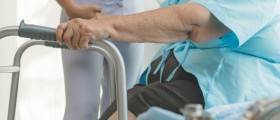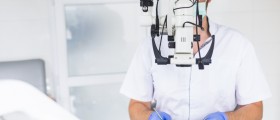Endoscopy is a medical procedure that has a name derived from the Greek language. The name literally translates as “looking inside," and that is what endoscopy is mostly about.
Endoscopy is a diagnostic, and sometimes therapeutic, procedure that is performed to visually investigate the inside of a hollow organ or any other cavity in the body. This article unveils answers to some of the most common questions about endoscopy for children.
How is Endoscopy Performed?
Endoscopy is performed using an endoscope, which is a thin and long flexible tube that usually has a light source and video camera at one end. The endoscope captures and sends images to the outside of the body, allowing the medical experts to see what is going on inside.

Endoscopes are usually inserted into the body through a natural opening (anus, throat, or vagina). However, sometimes endoscope is inserted through a small cut that is made on the skin. Endoscopy is considered a minimally invasive procedure, and it is often used even on children. Even though it is relatively safe, parents are often concerned about the risks and pain their child may be experiencing during the endoscopy.
How to Prepare for Child’s Endoscopy?
The most important thing about this procedure is to get well prepared. Both parents and the child should mutually express their concerns and seek support from doctors. Parents should get detailed information about endoscopy and discuss with the doctor what they can do to make their child feel more comfortable during the hospital stay. For example, patients may want to surround their child with favorite stuffed toys or other comfort items.
A child should also learn more about endoscopy, in the most suitable manner. Parents are often advised to describe things to their children from the child’s point of view. A child will benefit from knowing that the doctor needs to put it to sleep for a couple of minutes and that he or she will soon wake up to see their mom and dad.
Are There Any Risks?
Endoscopy is a relatively new science, but it is not associated with any severe risk of complications. Moreover, it is minimally invasive and very safe, and even children and infants tolerate this procedure very well, without any serious problems. Some rare complications seen in patients who have had an endoscopy are generally associated with reactions to medicine used for sedation.
In rare cases, doctors can make a mistake and create an injury to the esophagus or stomach. If this happens, treatment generally requires surgery, but in some cases it may even be treated with antibiotics and intravenous fluids.
- Cardiopulmonary and sedation-related adverse events may account for up to 60% of periprocedural complications from pediatric endoscopy.
- Pediatric sedation for gastrointestinal endoscopy results in rare but sometimes serious adverse events and requires a specialized approach. It is important to determine sedation risk based on the patient's profile and their ASA physical status score.
- Pediatric sedation is technically challenging and requires the expertise of pediatric anesthesiologists or an approved hospitalist led sedation team in accordance with ASA guidelines, institutional regulation, and applicable legislation. Endoscopist performed sedation is not advised as it results in decreased patient satisfaction, increased procedure time, and leads to higher risk for cardiopulmonary adverse events.
- Pediatric endoscopy centers should maintain appropriate quantities of endoscopic tools for foreign body management and hemostasis in both standard and ultrathin pediatric scopes.
- Limit accidental unpackaging of inappropriate sized equipment by clearly designating scope size requirements.
- Pediatric centers are frequently unable to provide advanced endoscopic procedures, however, adult advanced gastroenterologists may be able to help manage some patients. Establish and maintain a collegial relationship with local advanced endoscopists who are willing and able to care for pediatric patients.
- CO2 should be considered for pediatric endoscopy because it reduces post-procedural discomfort. This may reduce caregiver anxiety and lead to reduced emergency department overutilization.

















Your thoughts on this
Loading...